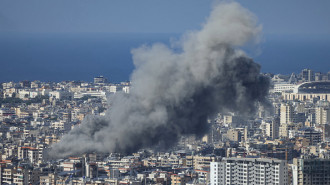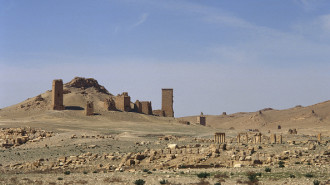How do humanitarian agencies define hunger in Gaza?
More than half a million people are believed to be living in famine-like conditions in Gaza and one in six children under the age of two in north Gaza are suffering from 'acute malnutrition and wasting'.
Almost all households are skipping meals and some families are going without food for consecutive days.
Carl Skau, the deputy executive director of the World Food Program, said this week that Gaza is "the worst level of child malnutrition anywhere in the world".
Two infants died from malnutrition in a hospital in north Gaza this week, the health ministry in Gaza said, while pregnant and breastfeeding women are increasingly vulnerable.
Months of fighting between Israel and Hamas and Israeli restrictions on imports into Gaza have resulted in a 'man-made' famine in Gaza, as declared by aid agencies.
Yet despite these and other stark findings, the UN and other humanitarian actors have yet to declare a state of famine in Gaza, but instead have maintained that Gaza is 'on the brink of famine'.
What does it mean for Gaza to be in a state of famine?
Famine is inevitable in Gaza unless Israel changes its war, Jens Laerke, spokesman for the UN humanitarian agency OCHA declared on Friday. "Once a famine is declared, it is too late for too many people," he said.
Before the war, cases of acute malnutrition like those being recorded today were non-existent, international NGO Action Against Hunger noted in a recent report on conflict-induced hunger in Gaza.
A spokesperson for Action Against Hunger told The New Arab that a state of famine can only be declared when certain criteria is met.
In crisis zones, hunger levels are calculated against specific criteria based on scientific standards and analytical approaches.
"In Gaza extreme food shortages are leading to severe malnutrition and loss of life," the spokesperson said in email comments.
"Famine, which is characterised by acute food scarcity and hunger-related deaths, is determined through the UN-led Integrated Phase Classification system, which requires meeting specific criteria including household food shortages, malnutrition rates, and mortality rates."
On the ground in #Gaza: @FAO launched a dedicated webpage with detailed reports on food insecurity in the area, including overviews of the damage to agricultural land and infrastructures and in-depth analyses.
— FAO Newsroom (@FAOnews) March 1, 2024
👇 https://t.co/MWjcqSK4q8
The criteria include 1 in every 5 households facing extreme food shortages, more than 3 in 10 people malnourished, and 2 in every 10,000 people dying of hunger each day.
Even despite the increasing reports of hunger-related deaths, restricted access and communications within Gaza have meant that the Integrated Food Security and Nutrition Phase Classification (IPC) and other humanitarian agencies have been unable to gather sufficient evidence to meet the criteria which defines a famine.
A February report from the Global Nutrition Cluster noted severe food insecurity in Gaza, including that 81 percent of households have less than one litre of water a day, with the worldwide minimum at 15 litres a day.
Destruction to food and water infrastructure
Israel’s intense bombardment of the strip has pummelled much of the agri-food industry, such as farms, crop fields, water desalination plants, and bakeries.
Before the war, Gaza was fairly self-sufficient and able to grow its own fruit and vegetables while also bringing in commercial products from outside. But the private sector’s collapse as imports have been restricted by Israel means the population is dependent on aid handouts.
In a report this week, the UN’s Food and Agriculture Organization (FAO) said that nearly half of all cropland was damaged, including destruction to animal shelters, barns and sheep and dairy farms.
Meanwhile, the olive and citrus fruit harvest in October and November, an important source of income and nutrition, was jeopardised by the war.
Gaza’s sea fishing industry which also provides income for many families has been forced to halt, both from destruction and dangers imposed to fishermen by Israeli navy ships besieging Gaza’s coastline.
FAO deputy director Maurizio Martina said this week at a UN Security Council briefing in New York that an "immediate ceasefire and peace are a prerequisite for food security, and the Right to Food is a basic human right."
Despite the humanitarian emergency in Gaza - where hunger and disease outbreaks are endemic - there is a severe shortage of aid supplies inside the territory to meet the shelter, food, water, and medical needs of the population.https://t.co/bh9sRrclg7
— The New Arab (@The_NewArab) March 1, 2024
Unheeded warnings
Back in December, an analysis from the IPC, a UN-led hunger monitoring system, revealed that the entire population of Gaza was facing crisis levels of hunger.
IPC said it was the highest proportion of people experiencing such severe hunger that the centre has ever classified for any given crisis zone globally.
Back then, the IPC – which partners with international aid agencies – delivered a stark warning that if the hostilities and limited aid access continued, the people of Gaza would face famine by February.
The IPC defines famine as when at least 20 percent of a population falls under phase five of acute food insecurity. In December it defined the population as in phase three or above.
And since then, alarming accounts have emerged of families being forced to survive off animal feed, gangs of desperate people looting aid, surging rates of infectious disease and children starving to death.




 Follow the Middle East's top stories in English at The New Arab on Google News
Follow the Middle East's top stories in English at The New Arab on Google News


![A group of Palestinians, foreign and Israeli activists gather to participated in an olive picking event on the land in the town of Battir, which is under threat of confiscation by Israel in Bethlehem, occupied West Bank on 8 November 2024. [Getty]](/sites/default/files/styles/image_330x185/public/2182930803.jpeg?h=199d8c1f&itok=__0LgGsa)